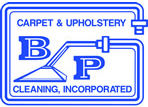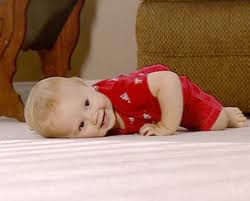Carpet Buckles and Wrinkles?
May 19, 2020
Sometimes it needs a little help. Here are some ways that we can help water clean better. Emulsification- Detergent and soap molecules have a dual nature. One end of the molecule called the head, attracts to water; the other end, the tail, attracts to oily soils. The tails attach to the soil; the heads remain in the water. This action breaks the oil and soils into tiny soap-enclosed droplets called micelles, which disperse throughout the solution. The micelles repel each other because of their charged surfaces, so the oils can’t join together once separated. This process of separating and suspending oils in a water-based solution is called emulsification. With the oil no longer bonding the dirt to the soiled surface, the soap-enclosed oils and soils can easily be rinsed away. Water softeners- Hard water usually contains minerals, primarily calcium and magnesium dissolved from rock and soil as water passes through earth. Hard water is a problem because it reduces the effectiveness of soaps and detergents. Detergents react with calcium and magnesium so it takes more detergent to get the job done. The hard water reaction with soaps is what creates the sticky residue called soap scum. Water softeners remove calcium and magnesium, increasing the effectiveness of cleaners. Soft water cleans better, rinses better and allows you to use less soap or detergent. Temperature- Heat reduces the surface tension of water, making it easier to penetrate and dissolve soils. Heat increases the effectiveness of soaps and detergents, so they work more efficiently. Hot water also helps melt and dissolve greases, oils and waxes. pH- One way to help water clean better is by adjusting its pH. Pure water has a neutral pH, neither acidic nor alkaline. By adding cleaning agents, we can change the pH of water. Since most common soils are acidic, most detergents are alkaline. When an alkaline detergent contacts an acidic soil, the soil is neutralized. In most cases, this results in more efficient cleaning, easier rinsing and less scrubbing. Saponification- Saponification is a process that changes natural fats and oils into soap. Many years ago, people made their own soap by combining animal or vegetable fats with lye, a strong alkali. Similarly, using an alkaline detergent has a similar effect on fats and food oils, basically turning them into soap, which can then be rinsed away with water. There is much more to cleaning than what we have discussed here. For best results, you need the right tools, techniques, training and experience. Fortunately, you don’t have to be a chemist or engineer to keep your house clean and healthy. Following manufacturer instructions on appliances and cleaning products generally yields good results. You can be confident that educated B/P Carpet & Upholstery Cleaning technicians will use the right cleaning agents, equipment and techniques to produce fantastic results with “plain old” water!


